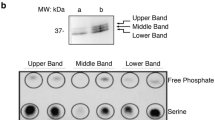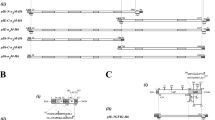Abstract
SUBLETHAL autolysis is postulated to be the process by which degradative enzymes may modify cell plasma membrane macromolecules without causing cell death1,2. Malignant or virally transformed cells can be agglutinated by various agglutinins; their untransformed counterparts are not agglutinated, but normal cells become agglutinable upon mild treatment of the cells with a proteolytic enzyme3. Therefore, elevated levels of degradative enzymes may be important for maintenance of the malignant or transformed state through sublethal autolysis, which constantly modifies cell plasma membrane surfaces. This report shows that L5178Y cells release small amounts of a protease active at pH 7.8 and that release of this enzyme is almost exclusively in the M period of the L5178Y mitotic cycle. Rubin4 reported that small amounts of trypsin or Pronase produced an overgrowth phenomenon in cells; that is, contact-inhibited cells were released from contact inhibition and proceeded through a subsequent round of mitosis. Rubin4 has also isolated from cells infected with Rous sarcoma virus a similar non-dialysable, thermolabile overgrowth-stimulating factor.
This is a preview of subscription content, access via your institution
Access options
Subscribe to this journal
Receive 51 print issues and online access
$199.00 per year
only $3.90 per issue
Buy this article
- Purchase on Springer Link
- Instant access to full article PDF
Prices may be subject to local taxes which are calculated during checkout
Similar content being viewed by others
References
Bosmann, H. B., Biochim. biophys. Acta, 264, 339 (1972).
Bosmann, H. B., Biochim. biophys. Acta, 279, 456 (1972).
Burger, M. M., In Growth Control in Cell Cultures (edit. by G. E. W. Wolstenholme and J. Knight) (Churchill and Livingston, London, 1971).
Rubin, H., Science, 167, 1271 (1970).
Dingle, J. T., in Lysosomes in Biology and Pathology (edit. by J. T. Dingle and H. B. Fell), 2, 421 (North-Holland, Amsterdam, 1969).
Weiss, L., The Cell Periphery; Metastasis and Other Contact Phenomena, (North-Holland, Amsterdam, 1967).
Reich, E., Fedn. Proc., 32, 2174 (1973).
Bosmann, H. B., Expl Cell Res., 54, 217 (1969).
Bosmann, H. B., Lockwood, T., and Morgan, H., Expl Cell Res., 83, 25 (1974).
Fischer, G. A., and Sartorelli, A. C., Methods med. Res., 10, 247 (1964).
Doida, Y., and Okada, S., Expl Cell Res., 48, 540 (1967).
Bosmann, H. B., Biochim. biophys. Acta, 203, 256 (1970).
Bosmann, H. B., and Bernacki, R. J., Expl Cell Res., 61, 489 (1970).
Bosmann, H. B., J. biol. Chem., 246, 3817 (1971).
Lowry, O. H., Rosebrough, N. J., Farr, A. L., and Randall, R. J., J. biol. Chem., 193, 265 (1951).
Bernacki, R. J., and Bosmann, H. B., J. Membrane Biol., 7, 1 (1972).
Bosmann, H. B., Int. J. Peptide Protein Res., 5, 135 (1973).
Hartley, B. S., A. Rev. Biochem., 29, 45 (1960).
Author information
Authors and Affiliations
Rights and permissions
About this article
Cite this article
BOSMANN, H. Release of specific protease during mitotic cycle of L5178Y murine leukaemic cells by sublethal autolysis. Nature 249, 144–145 (1974). https://doi.org/10.1038/249144a0
Received:
Issue Date:
DOI: https://doi.org/10.1038/249144a0
This article is cited by
-
Extracellular matrix destruction by invasive tumor cells
Cancer and Metastasis Reviews (1982)
-
α1-Antitrypsin is an effector of immunological stasis
Nature (1978)
-
An ultrastructural study of phosphatases and aryl sulphatase in BHK and CHO cells grown in culture
Protoplasma (1977)
-
Loss of a critical neutral protease in ageing WI-38 cells
Nature (1976)
-
The demonstration of acid phosphatase in cultured 3T3 mouse cells
Histochemistry (1976)
Comments
By submitting a comment you agree to abide by our Terms and Community Guidelines. If you find something abusive or that does not comply with our terms or guidelines please flag it as inappropriate.



